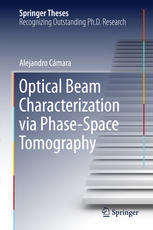

Most ebook files are in PDF format, so you can easily read them using various software such as Foxit Reader or directly on the Google Chrome browser.
Some ebook files are released by publishers in other formats such as .awz, .mobi, .epub, .fb2, etc. You may need to install specific software to read these formats on mobile/PC, such as Calibre.
Please read the tutorial at this link: https://ebookbell.com/faq
We offer FREE conversion to the popular formats you request; however, this may take some time. Therefore, right after payment, please email us, and we will try to provide the service as quickly as possible.
For some exceptional file formats or broken links (if any), please refrain from opening any disputes. Instead, email us first, and we will try to assist within a maximum of 6 hours.
EbookBell Team

4.8
34 reviewsThis thesis focuses on the fundamental problem of characterising partially coherent beams. The book describes several non-interferometric methods based on phase-space tomography for recovering the spatial coherence information of optical beams.
In the context of optical beams, partially coherent light provides numerous advantages over coherent light. From microscopy to optical communications, there are many disciplines that benefit from using partially coherent beams. However, their range of applications currently remains limited due to the complexity of extracting information. In addition to providing a feasible experimental solution for the general case, the book explores several situations in which beam symmetries are exploited to simplify the information extraction process. Each characterisation method is accompanied by a corresponding theoretical explanation and a thorough description of experimental examples.